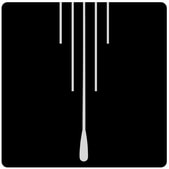Tonguing
Summary
- When playing a lines of notes on a wind instrument, our airstream is constantly flowing even as we change notes. We can separate these notes not by stopping our airstream (our breathing), but by interrupting the air with our tongue.
- When tonguing, the tongue very briefly taps the back of your upper teeth (or your instrument's read) to interrupt the sound and create separation. Usually the tongue is at rest.
- You can simulate this effect by saying "tah."
- While blowing, continue to think "tah" so that your tongue lays flat.
Imagine a garden hose. When the water is on, the water is constantly streaming out of the hose. When you place your hand in front of the hose, the water stops. However, the water hasn’t actually stopped, it’s just being blocked, and as soon as your hand moves away, the water immediately starts streaming out again with no need to work its way back through the entire hose. When playing a wind instrument, your body works in a similar way, except instead of water, we’re constantly blowing air, and instead of our hand blocking the stream, our tongue blocks it. This is called tonguing.
To replicate this effect, try the following:
- Blow cold air out of your mouth.
- Without stopping your airstream (that is, while still blowing air), block your mouth with your tongue.
- Continue to keep trying to blow. With your tongue in the way, no air should be leaving your mouth, but your body should feel like it’s blowing.
- Now, without changing your attempt to blow air, pull your tongue back. The air should immediately begin streaming out of your mouth again.
We next want to control the placement of our tongue. Say “tah”, and pay attention to what your tongue is doing. You will notice that your tongue taps the back of your upper teeth, and possibly a little higher where your gums meet your teeth. Now try this next exercise:
- Say “tah” and continue to hold that sound.
- Without stopping the sound, immediately say “tah” again so the two words seem to connect without any audible space between the two.
Now lets combine these two exercises:
- Blow cold air out of your mouth.
- Without stopping your airstream, tap your tongue against the back of your upper teeth as if you are saying “tah”. Hold your hand in front of your mouth so you can feel the continuous airstream. The air will only be interrupted for a split second.
Tonguing is used to articulate almost every note one plays on a wind instrument, whether repeating the same note or moving across different notes. The exact placement of your tongue depends on the instrument. The tongue will tap your upper teeth on brass and flute, and near the tip of the reed for clarinet and saxophone.
Want to know what your tongue actually looks like when playing? Well here you go:
